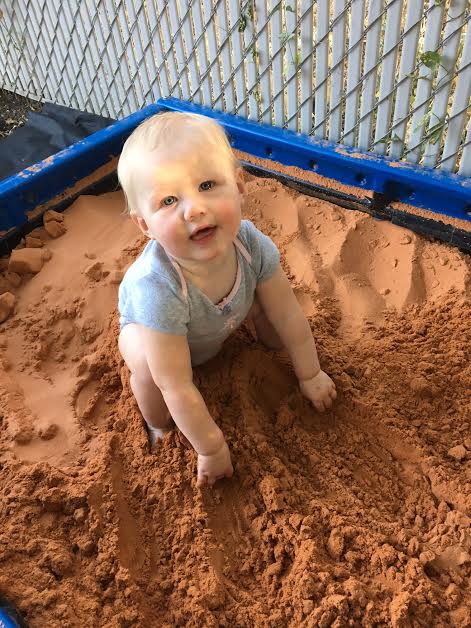At what age can your baby begin to play in the sandbox?
Posted by Jerry Bergosh on
 There are so many benefits to sand play, from developing arm and hand motor skills, to feeling different textures. It also is a great way to encourage social skills such as sharing. 'How early is too early' is a question I've been asked countless times over my 25 years of selling play sands, as well as being a geologist for 42 years (read about my credentials) and a Dad. So I agree with the recommendation that children can begin to play in the sandbox at 12 months old and base this on two primary sources: the US Consumer Product Safety Commission publication Age Determination Guidelines: Relating Children's Ages to Toy Characteristics and Play Behavior (CPSC Staff Document, September 2002, pages 26-27) which I quote:
There are so many benefits to sand play, from developing arm and hand motor skills, to feeling different textures. It also is a great way to encourage social skills such as sharing. 'How early is too early' is a question I've been asked countless times over my 25 years of selling play sands, as well as being a geologist for 42 years (read about my credentials) and a Dad. So I agree with the recommendation that children can begin to play in the sandbox at 12 months old and base this on two primary sources: the US Consumer Product Safety Commission publication Age Determination Guidelines: Relating Children's Ages to Toy Characteristics and Play Behavior (CPSC Staff Document, September 2002, pages 26-27) which I quote:
'Toddlers from 12 through 18 months of age...thoroughly enjoy water and sand play and are given many opportunities for exploration through sand, water and related toys'.
Our second source is the Toy Industry Association (TIA) and their use and endorsement of the above reference in meeting the required US Toy Safety Standards. PlaySafe.org, a site created for parents by parents at the TIA lists toy suggestions for infants ages 6 to 12 months old that include a sandbox and sand toys for those babies that can sit up. You can see their buying guide here.
We've all seen lots of infants that can barely crawl enjoying a day at the beach and eating sand, and I've personally supervised many toddlers younger then 10 months of age playing in the 4th of July sandbox I set up each year at our local city festival. I can personally attest to the fact that playing in clean sand is without doubt one of the most valuable, if not the most valuable, learning experiences they will have in their formative years!
Now a child's safety is always our top concern so if you think your baby is to young for a sandbox, we recommend trying out a sensory bin first. You can fill this with oatmeal, shredded paper, or clean play sand. These are great sensory materials that help ready children for a sandbox and you can gauge how they do with different textures and tactile experiences. Give them some spoons and other toys and let them bury, dig, and explore.
Even given official guidelines, we recognize the importance of parental supervision and certainly encourage parents, grandparents, care-givers, etc to always be on guard.
Eating sand, getting it in your eyes, hair, ears and clothes is never a pleasant experience as anyone who has been to the beach can attest. As always, we urge caution and diligence but I can pretty much guarantee your child and grandchildren will have have so much fun they won't want to leave!
Best regards & go play in the sand!
Geologist Jerry Bergosh aka The Jurassic Sandman
PS: click here to see our incredibly clean Jurassic PlaySands for your sandbox
Share this post
1 comment

educational toys for toddlers and preschoolers.Wow, thanks for putting this together! I will keep this in mind for when I get around to having kids. I’ve always liked educational toys for toddlers and preschoolers over ! Much better look.